| Cabot | |
|---|---|
 Coat of arms of the Cabot family. | |
| Current region | Boston, United States |
| Place of origin | Jersey |
| Connected families | |
| Estate(s) | |
The Cabot family is one of the Boston Brahmin families, also known as the "first families of Boston".
| Cabot | |
|---|---|
 Coat of arms of the Cabot family. | |
| Current region | Boston, United States |
| Place of origin | Jersey |
| Connected families | |
| Estate(s) | |
The Cabot family is one of the Boston Brahmin families, also known as the "first families of Boston".
The Boston Brahmin Cabot family descended from John Cabot (born 1680 in Jersey, a British Crown Dependency and one of the Channel Islands), who emigrated from his birthplace to Salem, Massachusetts in 1700. [1]
The Cabot family emigrated from Jersey, where the family name can be traced back to at least 1274. In Latin, caput means "head", and the Rev. George Balleine writes that in Jersey the "cabot" is a small fish that seems all head. [2] In French, once a commonly spoken language in Jersey, "cabot" means a dog, or a military corporal, "caboter" is to navigate along the coast, and "cabotin" means "theatrical". [3]

John Cabot (born 1680 Isle of Jersey) [1] and his son, Joseph Cabot (born 1720 in Salem), [4] became highly successful merchants, operating a fleet of privateers carrying opium, [5] rum, and slaves. [6] Shipping during the eighteenth century was the lifeblood of most of Boston's first families. Joseph's sons, Joseph Cabot Jr. (born 1746 in Salem), [7] George Cabot (born 1752 in Salem), [8] and Samuel Cabot (born 1758 in Salem), [9] left Harvard to work their way through shipping, furthering the family fortune [6] and becoming extraordinarily wealthy. Two of the earliest U.S. Supreme Court cases, Bingham v. Cabot (1795) and Bingham v. Cabot (1798), involved family shipping disputes. In 1784, Samuel Cabot relocated to Boston. [9]
George Cabot and his descendants went into politics. George Cabot became a U.S. Senator from Massachusetts, and was appointed but declined to be first Secretary of the Navy. His great-grandson, Henry Cabot Lodge (born 1850 in Boston) [10] was also a U.S. Senator from Massachusetts from 1893 until his death in 1924. In the 1916 election, Henry Cabot Lodge defeated John F. Fitzgerald, former mayor of Boston and the maternal grandfather of John, Robert and Edward Kennedy. George's great-great-great grandson, Henry Cabot Lodge Jr. (born 1902 in Nahant) [11] was also U.S. Senator from Massachusetts from 1937 to 1943 and from 1946 to 1953, when he lost to John F. Kennedy in the 1952 Senate election. Henry Cabot Lodge Jr. went on to be the U.S. Ambassador to United Nations under President Eisenhower and ambassador to South Vietnam under President Kennedy. He was 1960 vice presidential candidate for Richard Nixon against Kennedy–Lyndon B. Johnson. George's other great-great-great grandson, John Davis Lodge (born 1903 in Washington, D.C.) [12] was the 64th Governor of Connecticut. George's great-great-great-great grandson, George Cabot Lodge II (born 1927, son of Henry Cabot Lodge) ran against the successful Edward M. Kennedy in the United States Senate special election in Massachusetts, 1962.
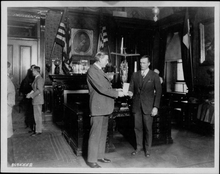
From John Cabot's grandson, Samuel Cabot's side, Samuel Cabot Jr. (born 1784 in Boston) [13] furthered the family fortune by combining the first family staples of working in shipping and marrying money. In 1812, [13] he married Eliza Perkins, daughter of merchant king Colonel Thomas Perkins. Samuel Cabot III (born 1815 in Boston) [14] was an eminent surgeon, whose daughter, Lilla Cabot Perry, was a noted Impressionist artist, [15] and son, Godfrey Lowell Cabot (born 1861 in Boston) [16] founded Cabot Corporation, [17] the largest carbon black producer in the country, used for inks and paints. Godfrey's son, John Moors Cabot (born 1901 in Cambridge), [18] a great-great-grandson of Samuel, was a U.S. Ambassador to Sweden, Colombia, Brazil, and Poland during the Eisenhower and Kennedy administration. Another great-great grandson, Paul Codman Cabot [19] (born 1898 [20] in Brookline), [21] was cofounder of America's first mutual fund [21] and "Harvard's [Endowment] Midas". [22]
The widely known [1] [5] [23] [24] "Boston Toast" by Holy Cross alumnus John Collins Bossidy features the Cabot family:
In 1923, Harry H. Kabotchnik and his wife Myrtle petitioned to have his family name changed to Cabot. [26]
Some prominent Cabots of Boston (Judge Cabot of the Boston Juvenile Court; Stephen Cabot, headmaster of St. George's School, Middletown, R.I.; Dr. Hugh Cabot, dean of Michigan University Medical School [27] ) along with the Pennsylvania branch of the Order of the Founders and Patriots, the Historical Society of Pennsylvania, and the Genealogical Society of Pennsylvania counter-sued to prevent the change. [28]
Judge Charles Young Audenried eventually ruled for the Kabotchniks, [29] as there was "nothing in the law to prevent it." [30]

Francis Cabot Lowell was an American businessman for whom the city of Lowell, Massachusetts, is named. He was instrumental in bringing the Industrial Revolution to the United States.

Robert Charles Winthrop was an American lawyer, philanthropist, and Whig Party politician who represented Massachusetts in the United States House and Senate from 1840 to 1851. He served as the 18th Speaker of the United States House of Representatives and was a political ally and colleague of Daniel Webster. After a rapid rise in Massachusetts and national politics and one term as speaker, Winthrop succeeded Webster in the Senate. His re-election campaign resulted in a long, sharply contested defeat by Charles Sumner. He ran for Governor of Massachusetts in 1851 but lost due to the state's majority requirement, marking the end of his political career and signaling the decline of the Massachusetts Whig Party.

The Boston Brahmins or Boston elite are members of Boston's traditional upper class. They are often associated with a cultivated New England or Mid-Atlantic dialect and accent, Harvard University, Anglicanism, and traditional British American customs and clothing. Descendants of the earliest English colonists are typically considered to be the most representative of the Boston Brahmins. They are considered White Anglo-Saxon Protestants (WASPs).
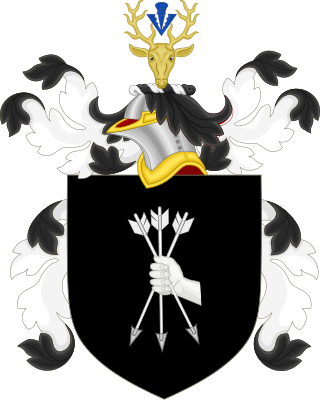
The Lowell family is one of the Boston Brahmin families of New England, known for both intellectual and commercial achievements.

Thomas Dudley Cabot was an American businessman. He also became the U.S. Department of State's Director of Office of International Security Affairs.
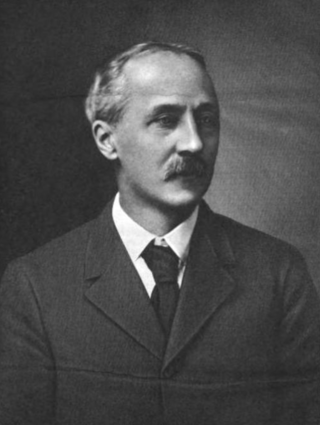
Godfrey Lowell Cabot was an American industrialist who founded the Cabot Corporation.

George Cabot was an American merchant, seaman, and politician from Massachusetts. He represented Massachusetts in the U.S. Senate and was the presiding officer of the infamous Hartford Convention.
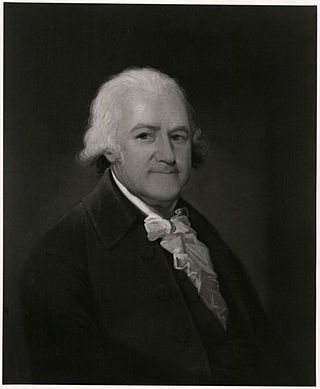
John Lowell was a delegate to the Congress of the Confederation, a judge of the Court of Appeals in Cases of Capture under the Articles of Confederation, a United States district judge of the United States District Court for the District of Massachusetts and a United States circuit judge of the United States Circuit Court for the First Circuit.
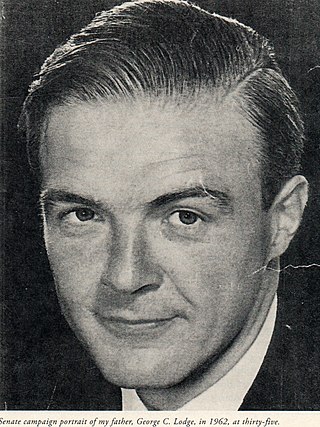
George Cabot Lodge II is an American professor and former politician. In 1962, he was the Republican nominee for a special election to succeed John F. Kennedy in the United States Senate, but was defeated by Ted Kennedy. He was the son of Henry Cabot Lodge Jr., who lost reelection to the Senate in 1952 to John F. Kennedy. His father was also the vice presidential nominee for the Republican party in 1960, an election won yet again by Kennedy.

Henry Lee Higginson was an American businessman best known as the founder of the Boston Symphony Orchestra and a patron of Harvard University.
The Massachusetts Republican Party (MassGOP) is the Massachusetts branch of the U.S. Republican Party.
Lee, Higginson & Co. was a Boston-based investment bank established in 1848 that was the home of many members of the Boston Brahmin establishment. The bank collapsed in the Swedish match scandal in 1932 while under the leadership of Jerome Davis Greene. The bank helped finance the growth of General Motors during the nascent phase of the American automobile industry.
George Cabot "Bay" Lodge was an American poet of the late 19th and early 20th centuries.
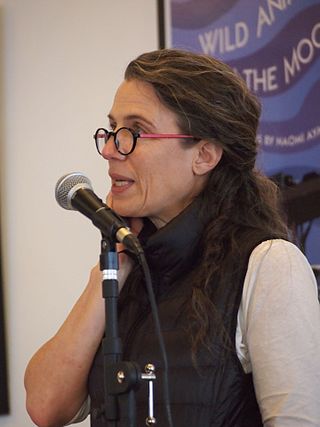
Sophie Cabot Black is an American prize-winning poet who has taught creative writing at Columbia University.

John Davis Lodge was an American film actor, lawyer, politician, and diplomat. He was the 79th governor of Connecticut from 1951 to 1955, and later served as U.S. ambassador to Spain, Argentina, and Switzerland. As an actor, he often was credited simply as John Lodge. He had roles in four Hollywood films between 1933 and 1935, including playing Marlene Dietrich's lover in The Scarlet Empress and Shirley Temple's father in The Little Colonel. He starred or co-starred in many British and European films between 1935 and 1940.

The Union Club of Boston, founded in 1863, is one of the oldest gentlemen's clubs in the United States. It is located on Beacon Hill, adjacent to the Massachusetts State House. The clubhouse at No. 7 and No. 8 Park Street was originally the homes of John Amory Lowell (#7), and Abbott Lawrence (#8). The houses were built c.1830-40, and they were remodeled for club use in 1896. The clubhouse overlooks the Boston Common, and has views of the Common itself, Boston's Back Bay neighborhood, and the hills to the west of the city.
The Lodge family is a formerly prominent New England political family, and among the families who make up the "Boston Brahmins", also known as the "first families of Boston".
George Cabot Lee Jr. was an American banker from Boston. He was the brother of Alice Hathaway Lee, the first wife of President Theodore Roosevelt.
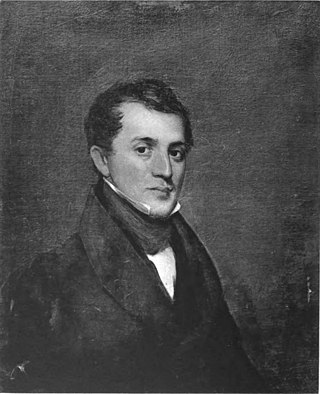
John Clarke Lee was an American lawyer, merchant, banker and politician who co-founded the prominent stock brokerage firm of Lee, Higginson & Co.
James Jackson Higginson was an American stockbroker and soldier who was imprisoned at Libby Prison for nine months during the Civil War.
{{cite journal}}: Cite journal requires |journal= (help)cabot, henry.
first cotton mill.
henry now married.Pg. 568
Gulf Central is a joint venture of Gulf Interstate Company, Houston; Cabot Corporation, Boston, Mass.[;] and Loeb, Rhoades & Co., the New York investment bankers.
[A] second independently owned and operated common carrier anhydrous ammonia pipeline system was under construction at the end of 1968...Built to transport ammonia from the major producing areas of the Texas and Louisiana gulf coast to consuming centers in Iowa, Illinois, Nebraska, Indiana, and Missouri, the new line, varying in diameter from 6 to 10 inches, will be known as the Gulf Central...¶Owners of the Gulf Central line were listed as the Gulf National State Bank of Houston, Tex.; Cabot Corporation of Boston, Mass.; Loeb, Rhoades and Co., New York; and a subsidiary of the Atcheson, Topeka and Santa Fe Railway.
![]() Media related to Cabot family at Wikimedia Commons
Media related to Cabot family at Wikimedia Commons